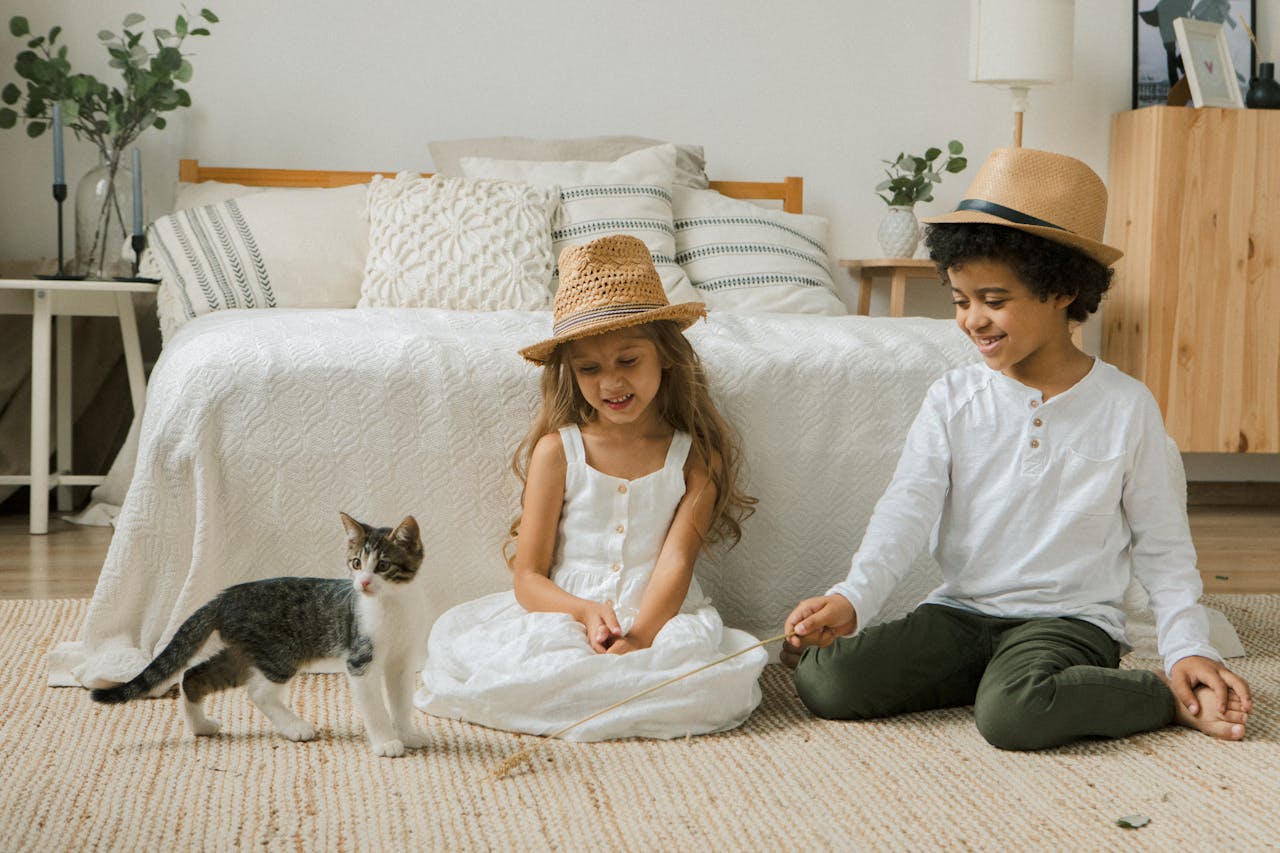
Cat sitting can be a rewarding experience for both the sitter and the cat owner. Whether you’re a professional pet sitter or a friend helping out a neighbor, taking care of someone’s beloved feline companion requires attention to detail, patience, and a deep understanding of cat behavior and needs. In this comprehensive guide, we’ll provide expert advice and practical tips for cat sitters and owners to ensure a smooth and stress-free cat sitting experience.
Understanding Cat Behavior:
Before embarking on a cat sitting assignment, it’s essential to familiarize yourself with basic cat behavior and communication cues. Cats communicate primarily through body language, vocalizations, and scent marking. Understanding these signals can help you anticipate your cat’s needs and respond appropriately.
- Body Language: Pay attention to your cat’s body posture, tail position, and facial expressions. A relaxed cat will typically have a loose posture, erect ears, and softly blinking eyes. Conversely, signs of stress or discomfort may include flattened ears, dilated pupils, and a tense body.
- Vocalizations: Cats use a variety of vocalizations to communicate, including meowing, purring, hissing, and growling. Each vocalization may convey different emotions or needs, such as hunger, contentment, fear, or aggression. Take note of your cat’s vocalizations and respond accordingly.
- Scent Marking: Cats have scent glands located in various parts of their bodies, including their cheeks, paws, and tail base. They use scent marking to communicate with other cats and mark their territory. Be mindful of any scent marking behavior, such as rubbing against furniture or spraying urine, as it may indicate territorial behavior or stress.
Preparing for Cat Sitting:
Proper preparation is key to a successful cat sitting experience. Whether you’re caring for a cat in your own home or visiting a client’s house, taking the time to prepare beforehand can help ensure the cat’s safety, comfort, and well-being.
- Gather Essential Supplies: Before the cat sitting assignment begins, make sure you have all the necessary supplies on hand. This may include food and water bowls, litter box and litter, toys, grooming tools, and any medications or special dietary instructions provided by the owner.
- Familiarize Yourself with the Cat’s Routine: Obtain detailed information from the cat owner regarding the cat’s daily routine, including feeding times, litter box maintenance, playtime preferences, and any medical or behavioral concerns. Sticking to the cat’s established routine as closely as possible can help reduce stress and anxiety during your absence.
- Create a Comfortable Environment: Set up a designated area for the cat that includes a cozy bed or blanket, scratching post, and hiding spots. Cats feel most secure in a familiar and comfortable environment, so try to replicate the conditions of their home as much as possible.
During the Cat Sitting Assignment:
Once the cat sitting assignment is underway, there are several important considerations to keep in mind to ensure the cat’s well-being and happiness.
- Provide Regular Feedings: Follow the cat’s regular feeding schedule and portion sizes provided by the owner. Avoid making sudden changes to the cat’s diet, as this can lead to digestive upset. Fresh water should be available at all times.
- Maintain Litter Box Hygiene: Keep the litter box clean and odor-free by scooping it at least once daily and replacing the litter as needed. Cats are fastidious creatures and may refuse to use a dirty litter box, leading to accidents or behavioral issues.
- Engage in Interactive Play: Spend quality time interacting with the cat through play sessions using toys such as feather wands, laser pointers, or interactive puzzle feeders. Playtime helps stimulate the cat mentally and physically and strengthens the bond between the cat sitter and the cat.
- Monitor the Cat’s Health and Behavior: Keep a close eye on the cat’s health and behavior throughout the sitting assignment. Look out for any signs of illness, injury, or distress, such as changes in appetite, lethargy, vomiting, diarrhea, or abnormal litter box habits. If you notice any concerning symptoms, contact the cat owner or a veterinarian promptly.
- Respect the Cat’s Space and Boundaries: Cats are independent creatures and appreciate having their own space and boundaries respected. Avoid forcing interactions or handling if the cat seems uncomfortable or uninterested. Allow the cat to approach you on their terms and provide them with opportunities for solitude and relaxation.
Communication with the Cat Owner:
Effective communication with the cat owner is essential for a successful cat sitting experience. Maintaining open and transparent communication helps ensure that the cat’s needs are met and any concerns or issues are addressed promptly.
- Provide Regular Updates: Keep the cat owner informed of their cat’s well-being and activities throughout the sitting assignment. Send regular updates, photos, and videos to reassure them that their cat is in good hands and receiving the care and attention they deserve.
- Report any Concerns or Issues: If you notice any changes in the cat’s behavior, health, or environment that may warrant attention, communicate these concerns to the cat owner immediately. Prompt reporting allows the owner to take appropriate action and ensures the cat’s safety and well-being.
- Follow Instructions Carefully: Respect any specific instructions or preferences provided by the cat owner regarding feeding, medication administration, grooming, and household routines. Following these instructions diligently helps maintain consistency and minimize stress for the cat.
Conclusion:
Cat sitting can be a rewarding and fulfilling experience for both cat sitters and owners. By understanding cat behavior, preparing carefully, and providing attentive care, cat sitters can ensure the comfort, safety, and happiness of their feline charges. Effective communication with the cat owner is key to a successful sitting assignment, allowing for peace of mind and trust between all parties involved. With proper planning and care, cat sitting can strengthen the bond between cats and their human companions and provide valuable support to pet owners in need of assistance.






